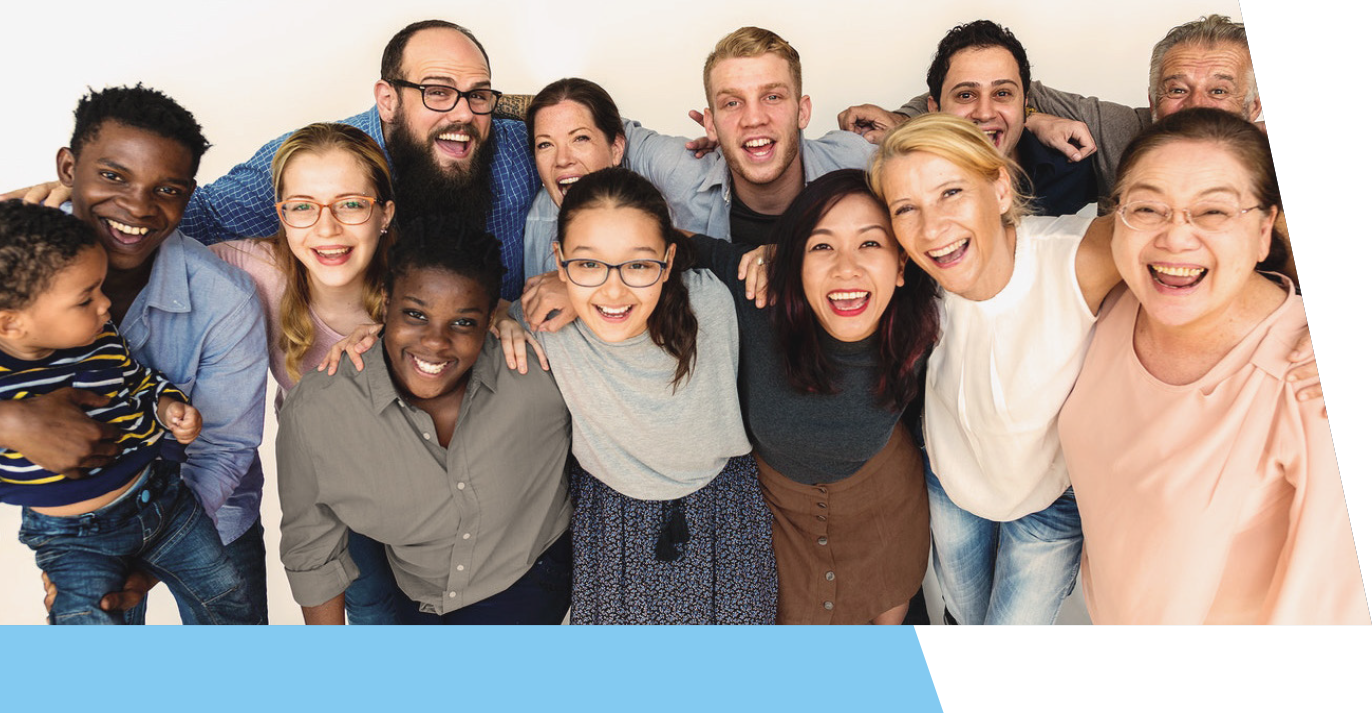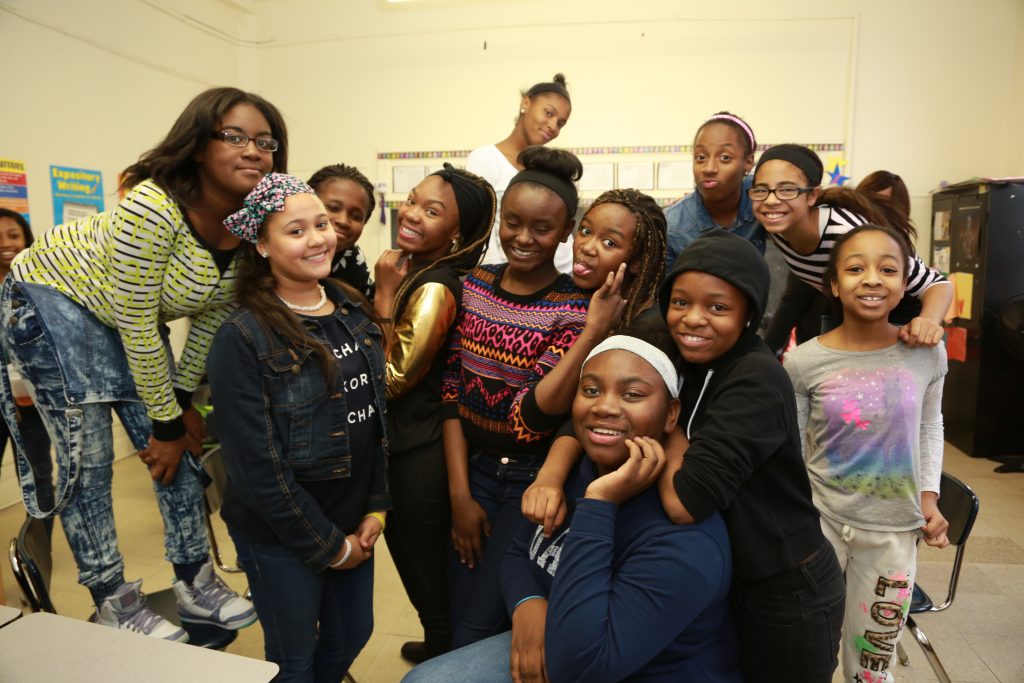Part
01
of one
Part
01
Non-Profit Case Studies
LEAP NYC's creative youth development programs cater to roughly 20,000 K-12 students in the five boroughs of NYC.
LEAP NYC
Background
- Learning through an Expanded Arts Program (LEAP) NYC was founded in 1977 and is a non-profit organization that focuses on improving public education quality. The organization's understanding of the challenges faced by today's educators and students, as a result, drives its goal of helping students maximize their potential.
- LEAP NYC leverages a "hands-on, arts-based learning approach" to improve the quality of public education. Its unique learning approach involves using cutting-edge programs, personalized services, and detailed materials to deliver high-quality education.
Challenges/Objectives
- LEAP NYC regards the arts as a significant way of fostering creativity, collaboration, critical thinking, and communication skills. However, LEAP recognizes that traditional teaching methods do not cater to all types of learners and that the arts are not always prioritized in educational institutions. These problems often lead to low engagement among students, which prevents them from maximizing their learning potential and creative skills.
- As creative thinking is a top skill required by 70% of employers and business leaders, LEAP NYC is looking to leverage the power of arts to develop such skills among "under-resourced public school students."
- Most students (83%) learning under LEAP NYC live at or below the poverty threshold, while 20% of them are students with special needs. The organization partners with the New York City (NYC) Department of Education to deliver its programs targeting under-resourced communities and schools underserved in the arts.
Solution
- LEAP NYC utilizes two program offerings, Arts Residencies during the school day and Comprehensive Afterschool Programs throughout the school year and summer to ensure academic and career success for public school students in NYC. These programs are taught in roughly 150 public schools in NYC.
- The organization operated "in-school and afterschool programs at 110 public schools, serving more than 14,700 pre-K to 12th-grade students" in the 2019-2020 school year. It utilizes a range of hands-on experiences to foster curiosity and creativity.
- LEAP NYC's school day programs include "established signature programs in visual arts, theater, literacy, and STEAM as well as custom arts residencies in other genres including dance, music, and new media." Its afterschool programs are available in-person and online via the organization's newly developed online learning system — Virtual Art Rooms.
- LEAP NYC also provides creative youth development programs to roughly 20,000 K-12 students in the five boroughs of NYC every year.
Results
- LEAP NYC has received significant "awards, grants, and endorsements from the NYC Department of Education, the US Department of Education, DYCD, TASC, the Mayor, and the Governor."
- The federal grants received were provided to study how LEAP NYC's arts education strategy improves students' literacy skills and performances. Students enrolled under the organization's programs showed improved academic excellence.
- LEAP NYC's curricula and educational materials are being adopted in schools. For example, its textbook, "Global Understanding — Cultural Literacy," is used in over 200 classrooms in 60 schools.
- It has served over 2 million children in the past 35 years.
Future Plans
- LEAP NYC plans to expand its reach to other schools underserved in the arts. The company also plans to grow its programs in NYC by strengthening its relationship with existing partner schools.
- The organization also plans to expand its reach to deliver its programs to schools with a limited budget and to extend the organization's resources to "support quality program delivery, outcomes measurement, and essential overhead."
- LEAP NYC also plans to partner with |"policymakers and institutional funders to advocate for the power of the arts and promote programs that generate outcomes through creative youth development." programming.
Financials
- LEAP NYC received $4,841,741 in contributions and grants in 2018 and $5,494,016 in 2019. Its net assets/fund balance at the end of 2019 was $740,782, down from $1,887,524 the previous year.
Educational Alliance
Background
- Educational Alliance is a 125-year old non-profit institution in NYC. The organization began as a means for Jewish immigrants to learn how to adapt to new conditions in the US. Its belief that education is a lifelong process drives its services and program offerings, gearing individuals towards innovation and community building.
- Jewish values drive Educational Alliance. However, it serves individuals regardless of their place of origin, language, or socioeconomic status. It offers a variety of educational programs and opportunities to individuals at any life stage.
Challenges/Objectives
- Educational Alliance's vision is to provide relevant community supports that allow individuals to excel.
- It partners with diverse communities in the Lower Manhattan region, bringing them together by offering "high-quality, multi-generational programs and services" to individuals and families, promoting their wellbeing and improving their socioeconomic opportunities.
- Educational Alliance helps bridge the gap across critical life stages, from childhood, college, and parenting, to retirement. It offers programs for the same, coaching, and classes to guide them through challenging life incidents such as addiction or a job loss.
- Educational Alliance brings communities together through its integrated network of community centers, targeted at individuals in various spheres of life, from recent immigrants to teens and older adults making their first artwork.
- It also aims to "build bridges across sectors, leveraging the best approaches and ideas from non-profit, for-profit, and government partners to ensure maximum impact and resolution of a full range of human needs."
Solution
- Educational Alliance leverages its community centers across 15 sites to provide "best-in-class programming and services, focusing on a mix of education, health & wellness, arts & culture, and civic engagement."
- Its program offerings include "Head Start preschools, early childhood education, afterschool programs, camps, College Prep for youth and parents, an art school, fitness programs, senior centers, a program for mentally ill and homeless Jewish adults, drug treatment and counseling."
Results
- Educational Alliance has successfully connected several NYC generations to social services and empowered them on their civil rights usage and community building.
- Its educational system creates progressive learning environments for over 2,000 kids aged 0-18 years daily. The 100 art classes that Educational Alliance offers yearly serves about 400 students on average, and its galleries and theater have a yearly reach of 5,500 people.
- The organization's health & wellness offerings engage over 25,000 people yearly.
Future Plans
- Educational Alliance plans to create a research and evaluation team, begin a redevelopment project for 14th Street Y., to make it a major downtown hub for Jewish life, ensure robust civic engagement programming in each center, and strengthen its existing partnerships with community schools.
- It will also carry out programming and space restructuring and enhancement of the Manny Cantor Center and launch a new branding strategy, including a new website and materials.
- Educational Alliance also plans to create a sustainable facilities plan for its centers, establish a formal partnership with a research institution, integrate constituent voice and choice into program design, invest in infrastructure, partner with other like-minded organizations to launch civic leadership development programs.
- It will extend its reach and impact by leveraging consulting conferences, training, and publications.
Financials
- Educational Alliance received $27,907,718 in contributions and grants in 2018 and $24,874,711 in 2017. Its net assets/fund balance at the end of 2018 was $63,201,370 declining slightly from $63,985,713 the previous year.
- In 2016, Educational Alliance received $28,769,563 in contributions and grants and had net assets worth $54,006,023.
SCAN-Harbor
Background
- SCAN-Harbor is a non-profit organization that provides youth and family services to support the kids and families in three of NYC's highest-risk communities — New South Bronx, Harlem, and East Harlem. It was established in 1977.
- SCAN-Harbor leverages an "empowerment-focused service approach" to inspire positive goal achievements among children and families.
Challenges/Objectives
- Challenges in three of the highest-risk communities in NYC include that 49% of the South Bronx children live in poverty. The South Bronx is also home to the most impoverished district (Congressional District 16) in the US.
- Most students (85%) in the South Bronx's District 9 failed the most recent NYS English Language Arts (ELA) test, and approximately 80% failed math.
- East Harlem constitutes the fifth-highest ranked city for juvenile misdemeanor arrests and the second-highest in Manhattan. In terms of child wellbeing, it is the highest-risk community in NYC. Roughly half of the high school students in East Harlem do not graduate, which increases to 68% in West Harlem.
- "In East Harlem's Community School District 4 (the district served by SCAN-Harbor) 76% of children in elementary and middle schools failed the most recent NYS ELA test, and 74% failed the math test."
- SCAN-Harbor seeks to address the unfavorable conditions threatening the academic potential and wellbeing of youths in NYC. It targets "young people growing in impoverished families with unemployed and under-educated parents or, more often, overwhelmed single mothers."
Solution
- SCAN-Harbor offers diverse programs such as "early childhood education, substance abuse treatment, violence prevention, performing arts, literacy programs, LGBTQ support, afterschool activities and events, employment skills training, and youth leadership."
- It leverages a family-focused approach to drive goal identification and achievement by fostering responsibility and initiative among community members.
- The organization's offerings are categorized into Youth Services, Family Preventive Services, and the Eisman Nursery.
- SCAN-Harbor's afterschool programs target elementary and middle school students by providing academic tutoring, cultural, and recreational programs. Its community centers across its primary locations offer more of the same for the youth. SCAN-Harbor also organizes summer camps for kids in East Harlem and the South Bronx, with safe educational and recreational offerings.
- The early childhood education program is unique to children, as it provides "cognitive, creative, and social development activities" from infanthood until preschool.
- SCAN-Harbor's other activities/programs promote health & wellbeing, arts & culture, workforce development through paid internships and placements, the LGBTQ community, social services, and youth development.
Results
- SCAN-Harbor is the most recognized youth service provider in the cities where it operates.
- It currently serves no less than 8,600 people including, children, teens, and adults, in 23 locations every year.
Future Plans
- SCAN-Harbor plans to continue maintaining its long-term partnerships with outstanding organizations such as New York Junior League and Stockings With Care, as they have been critical to its success.
- The organization plans to overturn the statistics in the three NYC highest-risk communities.
Financials
- SCAN-Harbor only has projected financials since the company recently merged from SCAN New York and Boys & Girls Harbor. Its total income projection is $20,971,993, the bulk of which would be realized from government contracts, fees for services, and Medicaid ($18,162,192).
- Here is the most recent financial information for SCAN New York and Boys & Girls Harbor.


